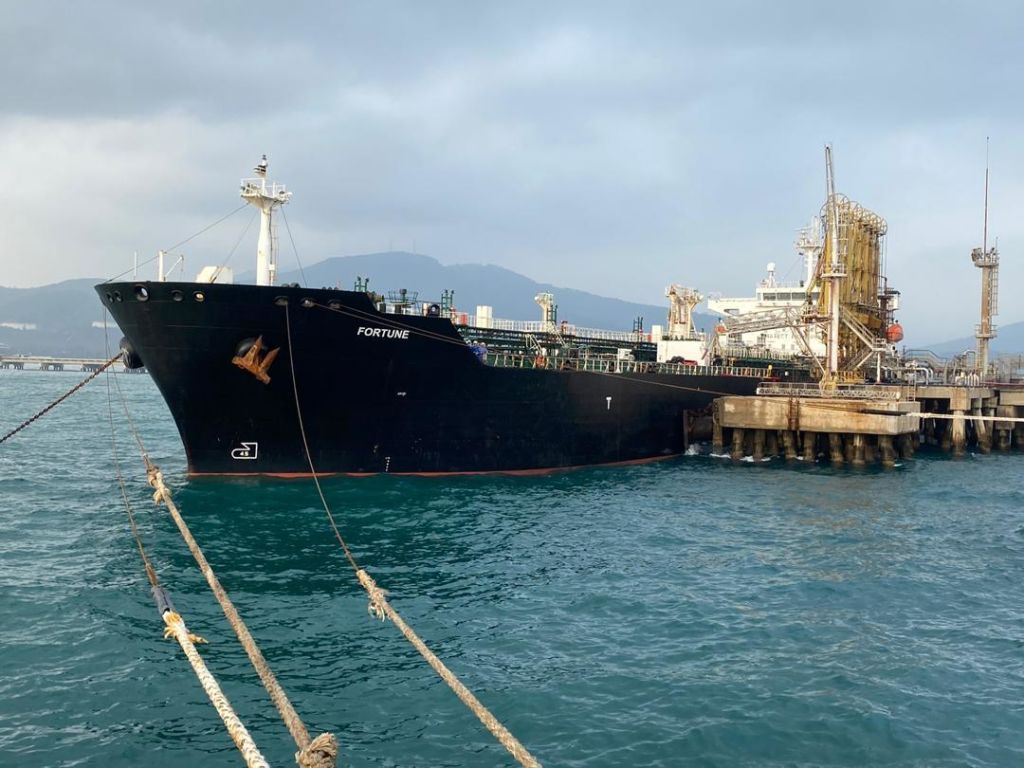Hamas’ horrific attack on Israel has prompted a debate within Washington about U.S. policy toward Hamas’ top external patron—and the world’s foremost state sponsor of terrorism—the Islamic Republic of Iran. Most of the attention has been on the $6 billion in Iranian assets that had been unfrozen as part of a hostage deal, termed by others as ransom. The U.S. and Qatar announced Thursday that those funds would not be released. But that controversy risks overshadowing a larger issue: Iran has made tens of billions of dollars from oil sales thanks to the Biden administration’s reluctance to enforce sanctions.
The lax sanctions enforcement stems from not only a political desire to punt the Iran problem to 2024, but also to try to restore what at this point appears to be a lesser version of the 2015 Iran nuclear deal known as the Joint Comprehensive Plan of Action (JCPOA). When the Biden administration entered office, Iranian intransigence was not the only hurdle to restoring the JCPOA. The Trump administration’s “maximum pressure” campaign against Iran had involved a “sanctions wall” of non-nuclear penalties predicated on non-nuclear threats rooted in Iranian policy that were layered on existing nuclear sanctions.
Biden could have used existing sanctions architecture and the substantial financial leverage it provided to pressure Tehran for more concessions. Instead, he opted to dismantle the sanctions wall, albeit indirectly and gradually, so as to avoid both congressional oversight and public criticism—but in a manner deemed intelligible and tempting to Tehran’s theocrats.
The problem? It did not work. A new formal agreement with Iran failed to materialize. Tehran has escalated its program to include stockpiling highly enriched uranium at 20 percent and 60 percent purity, the latter of which is technically more than 90-plus percent of the way needed to attain weapons-grade levels. Using these stockpiles, Iran can produce enough weapons grade uranium (WGU) for one bomb in 12 days.
Team Biden’s response to the evolving threat has predictably blamed his predecessor. But this blame game misses two important macroeconomic realities on the ground in Iran. First, unenforced sanctions have enabled Tehran to increase its export capacity. Second, unenforced sanctions have granted Tehran greater access to export-generated revenues.
Oil has long been one of Iran’s primary exports. Non-oil exports have surpassed its oil exports in recent years, but oil continues to hold a crucial position in bolstering the Iranian government’s financial stability. Unlike its non-oil equivalents, the regime has full control over oil exports.
In May 2018, the Trump administration withdrew from the JCPOA. Six months later, in November 2018, the administration fully restored penalties it had previously waived while the U.S. was a JCPOA participant. And in May 2019, the administration terminated a waiver permitting select nations to import even significantly reduced quantities of Iranian crude oil.
According to data from the nonprofit United Against Nuclear Iran, the Islamic Republic’s exports stood at 2.9 million barrels per day in April 2018. By May 2019, these exports had plummeted to 385,000 barrels per day. During the period from May 2019 to January 2021, which coincided with the peak of the Trump administration’s “maximum pressure” policy, Iran on average exported 775,000 barrels per day.
In 2019, Tehran’s oil exports amounted to 831,000 barrels per day. The year 2020 witnessed a modest increase, with exports reaching 868,000. However, Iran’s oil exports surged following the inauguration of President Biden in 2021, reaching 1.14 million barrels a day, an increase of 31 percent from the previous year. This export level was maintained throughout 2022, and in 2023 exports jumped dramatically. From January to August 2023, the average export rate stood at 1.4 million barrels a day. Snapshots from late August and early September show Iran exporting about 2 million barrels daily.
This consistent upward trajectory has significantly boosted the regime’s financial resources. During the maximum pressure period, Tehran accumulated only about $25 billion in oil revenues. However, since President Biden entered office, Iran has successfully sold approximately $95 billion worth of oil, $32 billion of which represents excess revenue—funds that Iran would not have generated if it had continued to export oil at the levels seen during the maximum pressure period.
And it’s not just Iran’s oil exports that have grown. Non-oil exports such as petrochemicals, natural gas, and industrial metals—most of which are also subject to sanctions—have skyrocketed while Biden has been president. In fiscal year 2023, Iran earned $53.6 billion, its highest ever, from these exports.
As the World Bank notes, Iran’s overall exports declined in 2019 and 2020 by 17.3 and 12.8 percent, but increased by 5.2 and 8.2 percent in 2021 and 2022.
In addition to rising export volumes, Iran has significantly improved its access to export revenues such that Iranian officials have taken to boasting about their success in repatriating funds. This is a worrisome phenomenon benefitting entities subject to sanctions such as the Central Bank of Iran, National Iranian Oil Company, and National Iranian Tanker Company. While it’s wise to view such braggadocio with skepticism, Iran’s recent diplomatic offensive and hostage diplomacy with Iraq, South Korea, and the U.S. has afforded it at least $16 billion, however directly or indirectly.
Emboldened, Tehran is now eyeing frozen funds it has in escrow in other former oil importers, such as Japan, which reportedly holds around $3 million. It’s also reasonable to assume that throughout this time, Iran’s access to revenues in China, its primary oil customer, has expanded substantially.
Rising revenues and increased access to them have yielded a significant increase in Iran’s net currency reserve and economic growth. According to the World Bank, Iran’s economy grew 4.7 percent in 2021 and 3.8 percent in 2022. Data from Iran’s Central Bank indicates that the country’s net foreign currency reserve (calculated by subtracting liabilities from total assets) has increased 45 percent from 2021 to 2023.
Connecting the dots, economic empowerment along the lines of what the Biden administration has permitted thus far for the Islamic Republic has not translated into a more restrained Iran. Instead, it has enabled the world’s foremost state sponsor of terrorism to continue acting on a slogan it and its proxies have long chanted and are working toward. That slogan is “death to Israel.”
Click here for more coverage of the war in Israel.






Please note that we at The Dispatch hold ourselves, our work, and our commenters to a higher standard than other places on the internet. We welcome comments that foster genuine debate or discussion—including comments critical of us or our work—but responses that include ad hominem attacks on fellow Dispatch members or are intended to stoke fear and anger may be moderated.
With your membership, you only have the ability to comment on The Morning Dispatch articles. Consider upgrading to join the conversation everywhere.